When Russia launched the first module of the International Space Station (ISS), Zarya, on November 20th, 1998, it was the beginning of a new space age. The unit provided the first basic systems for the nascent orbital platform. Two weeks later, NASA launched Unity, aboard Space Shuttle flight STS-88, and attached it to Zarya using astronauts working outside their spacecraft. Over the quarter of a century since, the ISS has become an icon, not only visibly with its tubular design and solar-panel wings, but also as a symbol of what humanity can accomplish by working towards a common goal, for the future of space exploration, and our ability to reach out into the solar system and beyond.
Watch NASA’s “A Bridge Above”:
The antecedents of the change can be traced back to President Ronald Reagan’s 1984 State of the Union address. Long after President Kennedy, in 1961, charged America with the task of landing a man on the moon before the decade was out, the nation was now challenged “to follow our dreams to distant stars, living and working in space for peaceful, economic, and scientific gain. I am directing NASA to develop a permanently manned space station and to do it within a decade.” This would be, as Reagan pointed out, “taking giant steps for all mankind.”
The presidential mandate to build the permanent space station was initially in response to the Soviet Salyut and Mir space stations. In 1984, NASA invited the ESA (European Space Agency) to participate in Space Station Freedom, and ESA approved the Columbus laboratory as part of that by 1987. But it was 30 years ago, in September 1993, that American Vice-President Al Gore and Russian Prime Minister Viktor Chernomyrdin announced plans for a new orbital platform, which eventually became the agreements for the new International Space Station.
Watch life aboard the ISS:
It is now a multinational collaborative project involving five participating space agencies: NASA (United States), Roscosmos (Russia), ESA (Europe), JAXA (Japan), and CSA (Canada), where the components for in-orbit assembly were manufactured in various countries around the world, and its construction is a continuous endeavour in space architecture. Being modular in form, the individual units can be added to, updated, and maintained as required. The ownership and use of the ISS is established by intergovernmental treaties and agreements with far greater collaborative and cooperative understanding than most on Earth. It is a veritable United Nations of Olympian standing above the world.
The ISS serves as a microgravity and space environment research laboratory in which scientific research is conducted in astrobiology, astronomy, meteorology, physics, and other fields. There is also the testing of spacecraft systems and equipment, of which some might seem mundane, such as food and cooking, water reclamation, exercise, bathing, even lavatory design, but nonetheless are required for future long-duration missions to the Moon and Mars.
The ISS is the largest artificial object in the solar system and because of its low orbit, it is regularly visible to the naked eye from Earth’s surface. It maintains an average altitude of about 250 miles by means of reboost manoeuvres using the engines of the Zvezda Service Module or visiting spacecraft. It circumnavigates the Earth in roughly 93 minutes, completing 15 orbits per day, and travelling at approximately 17,500 miles per hour. Crews fly expeditions of several months’ duration, providing around 160 person-hours per week of labour with a crew of six, with a considerable amount of time taken up by station maintenance.
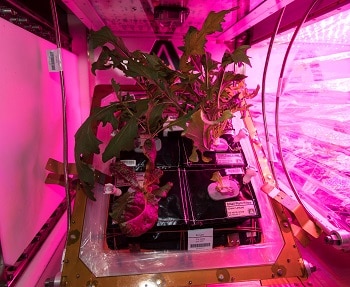

Left: The Veg-03 experiment is part of the efforts to grow food in space. Right: Astronauts exercise two hours a day to prevent muscle atrophy and bone weakness. Here ESA astronaut Thomas Pesquet. © ESA-NASA.
The first long-term residents arrived in November 2000, which means the ISS is the longest continuous human presence in space. As of April 2022, 251 astronauts, cosmonauts, and even tourists from 20 different nations have visited. It is probably the most expensive single item ever constructed. A budgeting exercise dated in 2010, estimated the total construction cost at approximately US$150 billion. Of course, that number did not include maintenance and additional modules that would have been subsequently added since.
Over the 25 years the list of accomplishments and benefits for all are too many to list here. In the interests of brevity, major contributions broadly break down into two areas: can life, as we know it, exist in the extreme environment of space; and the ability of humans to undertake interplanetary or even interstellar travel. As such, space is hostile to life and the unprotected presence is characterised by an intense radiation field, five times greater than for airline passengers.
Some simple forms of life called extremophiles, as well as small invertebrates called tardigrades can survive in this environment through desiccation. ISS scientists have also reported that the usual earthbound Deinococcus Radiodurans bacteria, were found to survive for three years in space, supporting the notion of panspermia, the hypothesis that life exists throughout the universe – distributed in various ways – and is also the basis for belief that there might be extraterrestrial life.
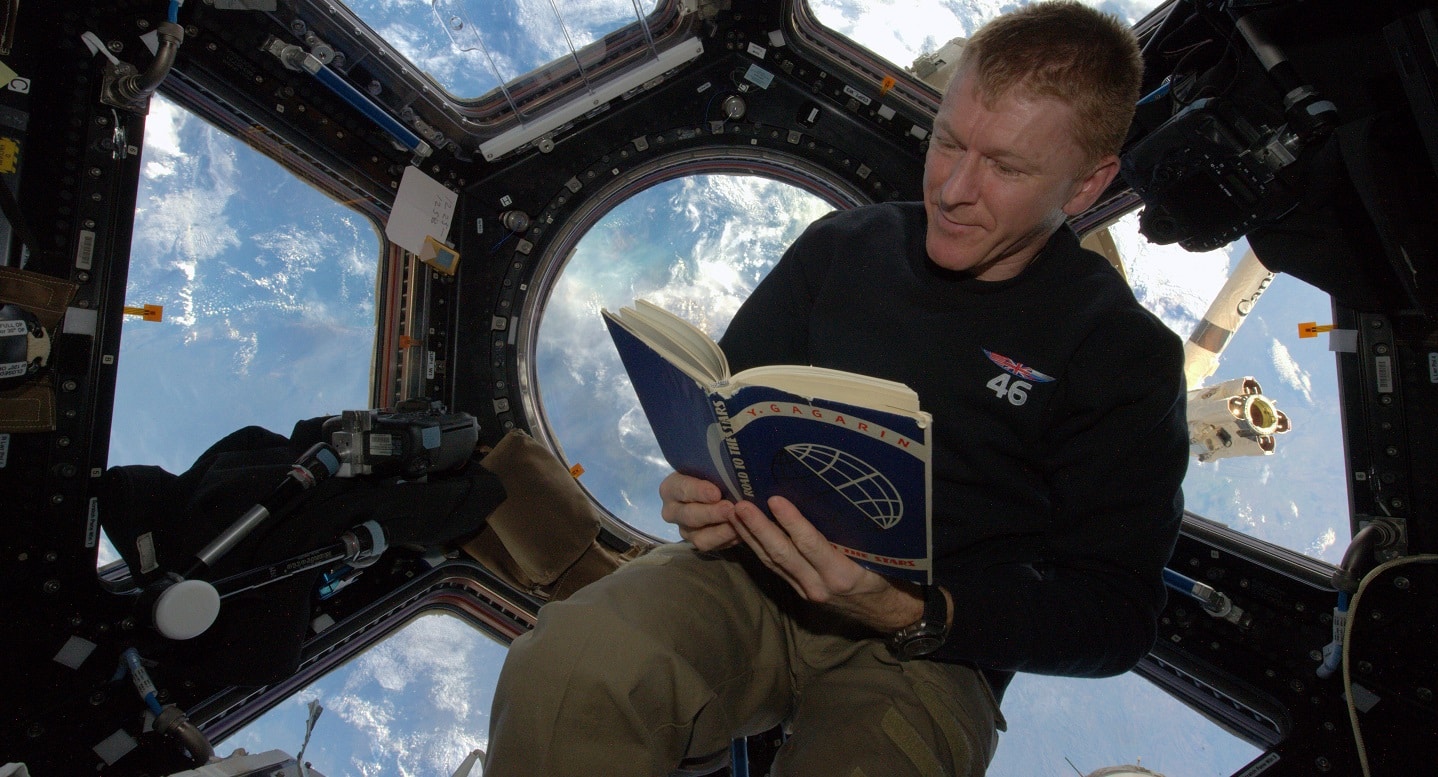
ESA astronaut Tim Peake in the ISS Copula reading Yuri Gagarin’s autobiography, Road to the Stars. © ESA-NASA.
Outside of the need for breathable air, water and sustenance, humans suffer in a number of ways from prolonged periods in space, and it is the research at the ISS that has pioneered an understanding of the effects of micro or zero gravity. A typical stay for an astronaut weakens the immune system, causes other health issues, including muscle atrophy, bone loss, and fluid shift, and provides the type of data which helps determine whether long duration human spaceflight is feasible. For example, data on bone loss and muscular atrophy suggest that there would be a significant risk of fractures and movement problems if astronauts landed after a six-month voyage to Mars. Other experiments have determined how the human body changes during these missions and how it recovers.
Recently, the research on astronauts at the ISS has indicated an imbalance of the microbiota in the digestive tract causing changes in the immune system of crew members, possibly caused by environmental stress. The analysis has identified bacterial and metabolic clues about changes in the gut that reduced the effectiveness of the immune system. As part of the experiments, ESA’s Tim Peake prepared a series of biomarkers that could be used to evaluate the immune system and manage the health of astronauts during space voyages. Equally, the related problem to the ongoing health of the astronaut concerns the diagnosis and potential treatment of ailments in space. Prominent among the experiments has been performing ultrasound scans under the guidance of remote experts. As there is no physician on board the ISS, diagnosis of medical conditions is a challenge, and the experiments are crucial if there is a need to treat individuals on a long space flight.
Watch Astronaut Chris Hadfield’s cover of David Bowie’s, Space Oddity:
The iconic status of the ISS is equally marked by the inclusion of science programmes and outreach to all on Earth. Arguably nothing more typified this than Canadian Chris Hadfield floating in the Space Station, strumming a guitar, and singing a cover version of David Bowie’s Space Oddity, where the lyrics “For here am I sitting in a tin can, Far above the world” never resonated more poignantly. Not surprisingly, the video went viral across social media platforms.
There was, at the genesis of humankind’s tentative foray out of Earth’s gravity, a belief that our collective future lay away from the world and its terrestrial constraints. The ISS is proof positive that there may yet be a utopian future among the stars, where all work, across all people, is for the common good; that language, learning, and the usual geopolitical mandates are set aside for a common purpose. The ISS has become an icon of what is possible and how humanity might potentially undertake the exploration of space.
Words: Dr Andrew Hildreth
Opening image: View of the ISS taken by the crew of the Soyuz MS-08 spacecraft, October 4, 2018. © Roscosmos-NASA







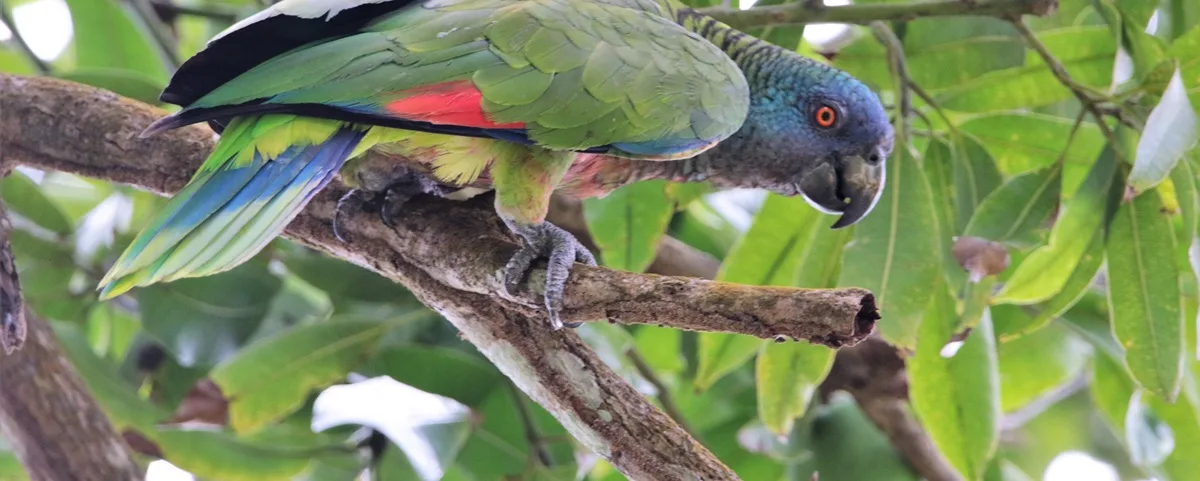

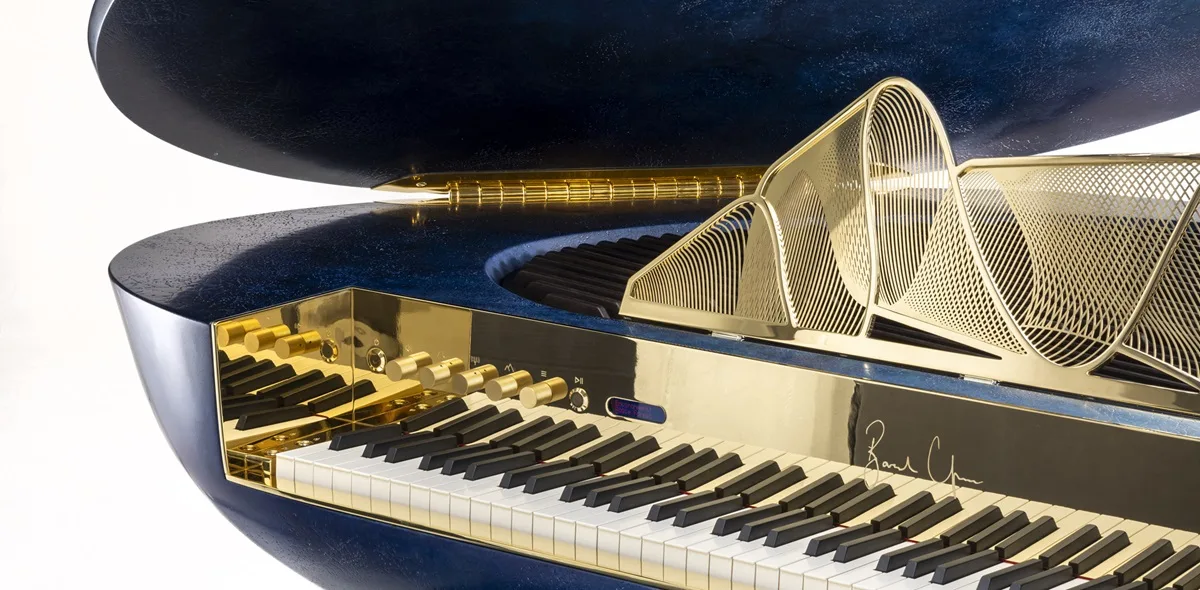
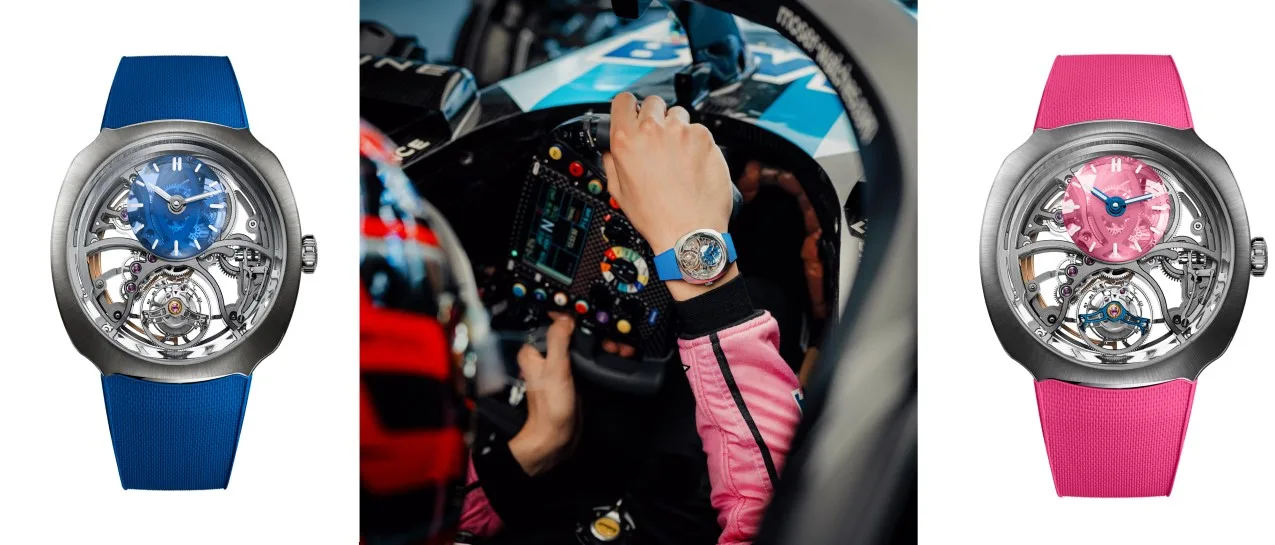
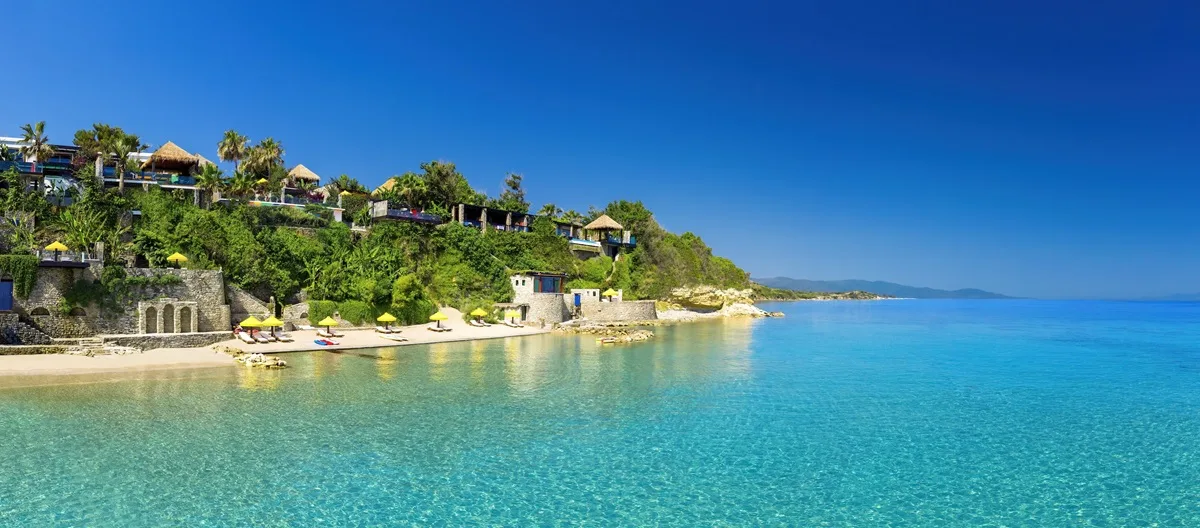


Show Comments +